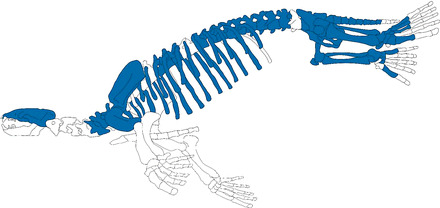@WFS,World Fossil Society,Riffin T Sajeev,Russel T Sajeev
A new Miocene pinniped Allodesmus (Mammalia: Carnivora) from Hokkaido, northern Japan
A nearly complete pinniped skeleton from the middle Miocene Okoppezawa Formation (ca 16.3–13.9 Ma), Hokkaido, northern Japan, is described as the holotype of Allodesmus uraiporensis sp. nov. The new species is distinguishable from other species of the genus by having the palatine fissure (incisive foramen) that is located anterior to the canine, an anteriorly located supraorbital process of the frontal, and by having the calcaneum with a developed peroneal tubercle. Our phylogenetic analysis suggests that the subfamily Allodesminae are represented by two genera, Atopotarus and Allodesmus, and the latter genus is represented by at least six species; Al. kernensis, Al. sinanoensis, Al. naorai, Al. packardi, Al. demerei and Al. uraiporensis sp. nov. Allodesmus uraiporensis sp. nov. is one of the oldest and the northernmost record of the genus in the western North Pacific, and it suggests that the diversification of the genus in the western North Pacific was synchronous to the time of their diversification in the eastern North Pacific.

Reconstruction of skull of the holotype (AMP 25) of Allodesmus uraiporensis. (a) dorsal, (b) ventral and (c) lateral views. Solid lines indicate those elements that are preserved on at least one side of the holotype, and other missing parts are represented by dashed lines.
@WFS,World Fossil Society,Riffin T Sajeev,Russel T Sajeev



 June 21st, 2018
June 21st, 2018  Riffin
Riffin 
 Posted in
Posted in  Tags:
Tags: 